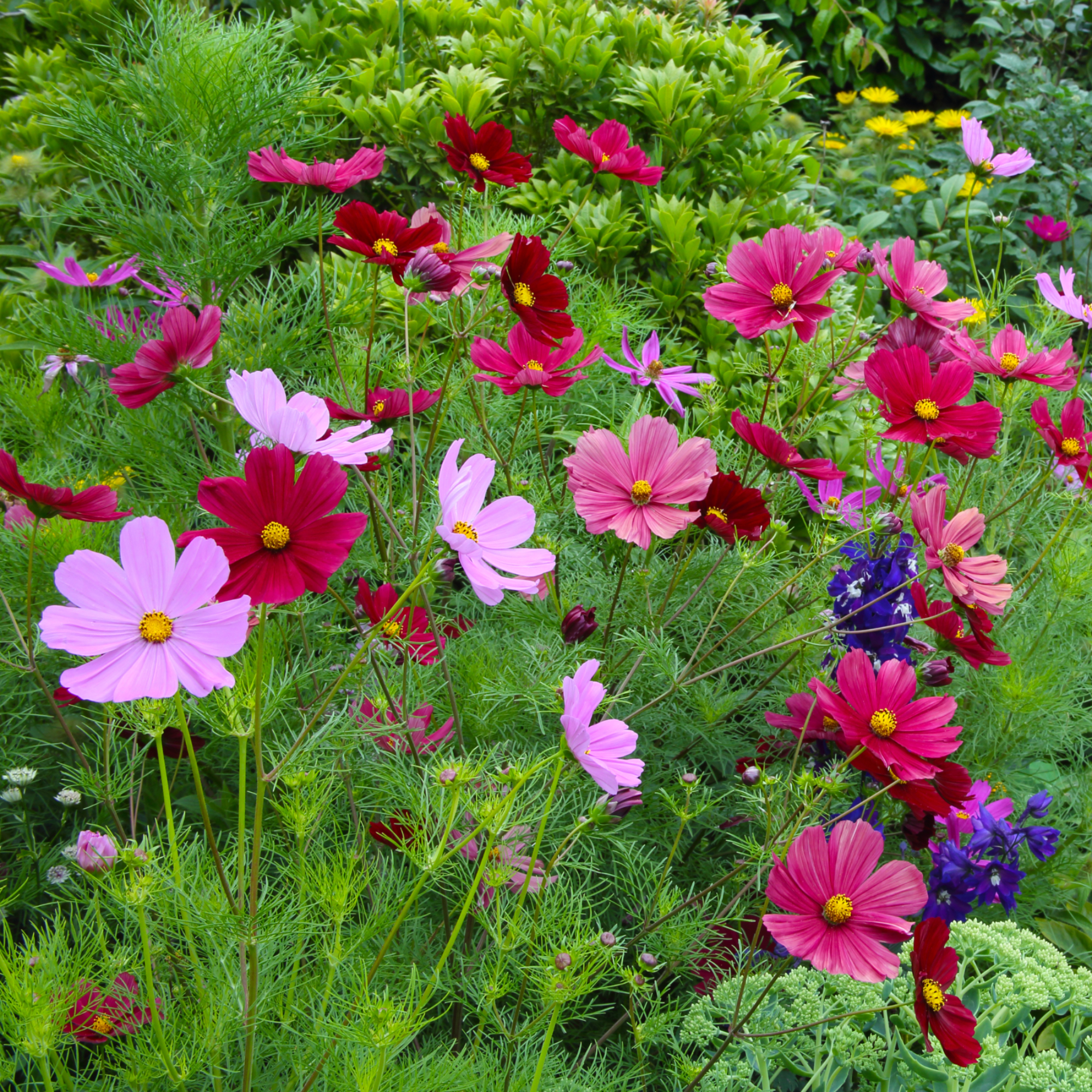
Cosmos are a fantastic addition to any garden, serving as a low-maintenance plant to add colour to your outdoor space. Therefore, it only makes sense that you're probably wondering how to grow cosmos to ensure they flower beautifully come the summer season.
With warmer days finally among us, tending to your garden is finally a task that feels just that extra bit rewarding. If you're after an easy garden idea to try your hand at while taking advantage of the sun, growing cosmos is a fairly straightforward job that gardeners of any experience can certainly get behind.
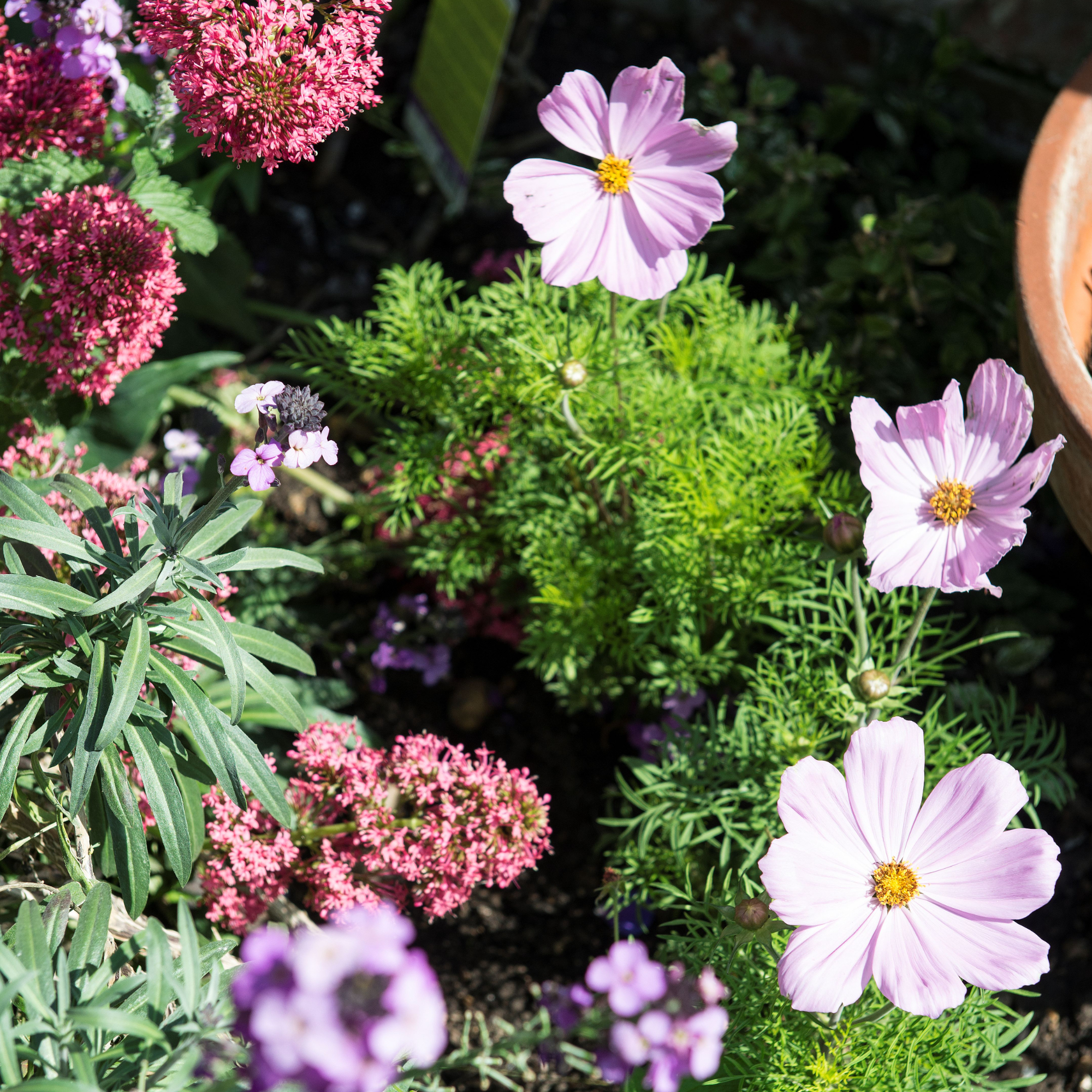
How to grow cosmos
'Growing cosmos is a delightful experience, as these beautiful flowers are relatively easy to cultivate and can add a splash of colour to any garden. Just consider these steps, and you will be satisfied with your cosmos in the garden,' begins Petar Ivanov, gardening and plant expert at Fantastic Gardeners.
What you'll need
Step-by-step guide
1. Choose the right time to sow your seeds
'Cosmos are summer flowering plants, so need to be planted ahead of the summer season. Cosmo seeds can be sown from early spring. However, we recommend planting your cosmos in your garden between May and June, when the weather has started to heat up and the last frost has passed,' explains Andrew White, gardening expert at Rhino Greenhouses Direct.
'By planting your cosmos in May and June, you are guaranteed your cosmos will be in bloom throughout the summer and well into autumn.' So if you're looking for things to plant in May, then you've come to the right place.
2. Choose the right location
'To successfully grow cosmos it's important to note that they love full sun so take this into consideration when choosing a location in your garden,' notes Chris Bonnett, founder of Gardening Express.
Petar advises selecting a spot in your garden that receives at least 6-8 hours of direct sunlight per day. If you've got a north-facing garden, this should be especially easy to achieve. 'Ensure the soil is well-draining, as cosmos prefer slightly sandy or loamy soil. They can tolerate poor soil conditions but do best in moderately fertile soil,' he adds.
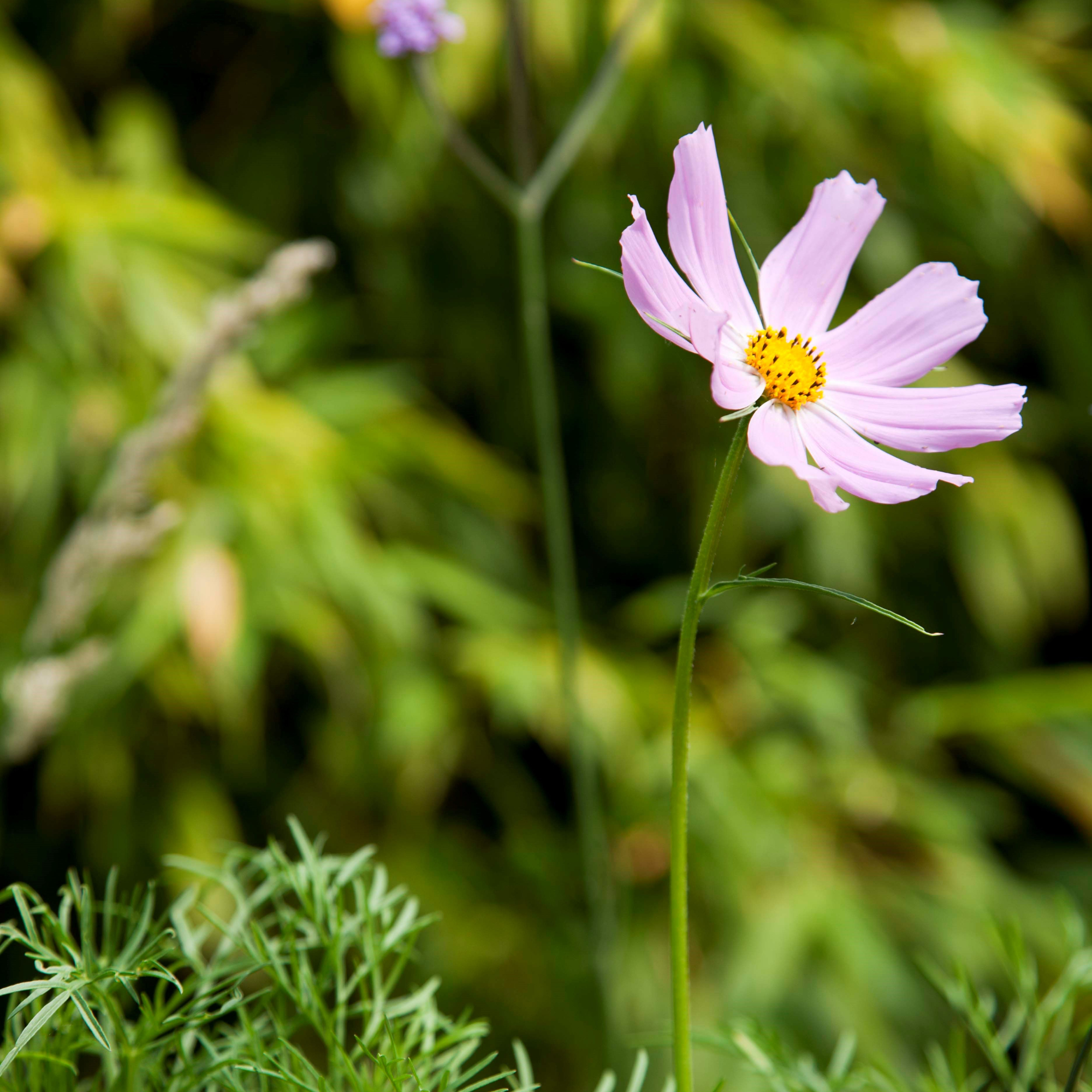
3. Prepare the soil
Before planting your cosmos, Andrew advises breaking apart the top layer of your soil with a rake, to ensure the consistency of your soil is fine in texture.'
'Work the soil to a depth of about 15-20cm, breaking up any clumps and removing debris,' adds Petar. He even suggests incorporating organic matter such as compost or aged manure to improve soil fertility and drainage, which will help your seeds germinate.
4. Plant your seeds
As with any plant, depth and spacing are very important for growing cosmos. Petar advises planting cosmo seeds about 60cm deep and spacing them 20-50cm apart.
In the case that you decide to go down the container garden route and start your cosmos off in pots, plant transplants at the same depth as they were in their containers and ensure you water them thoroughly after planting.
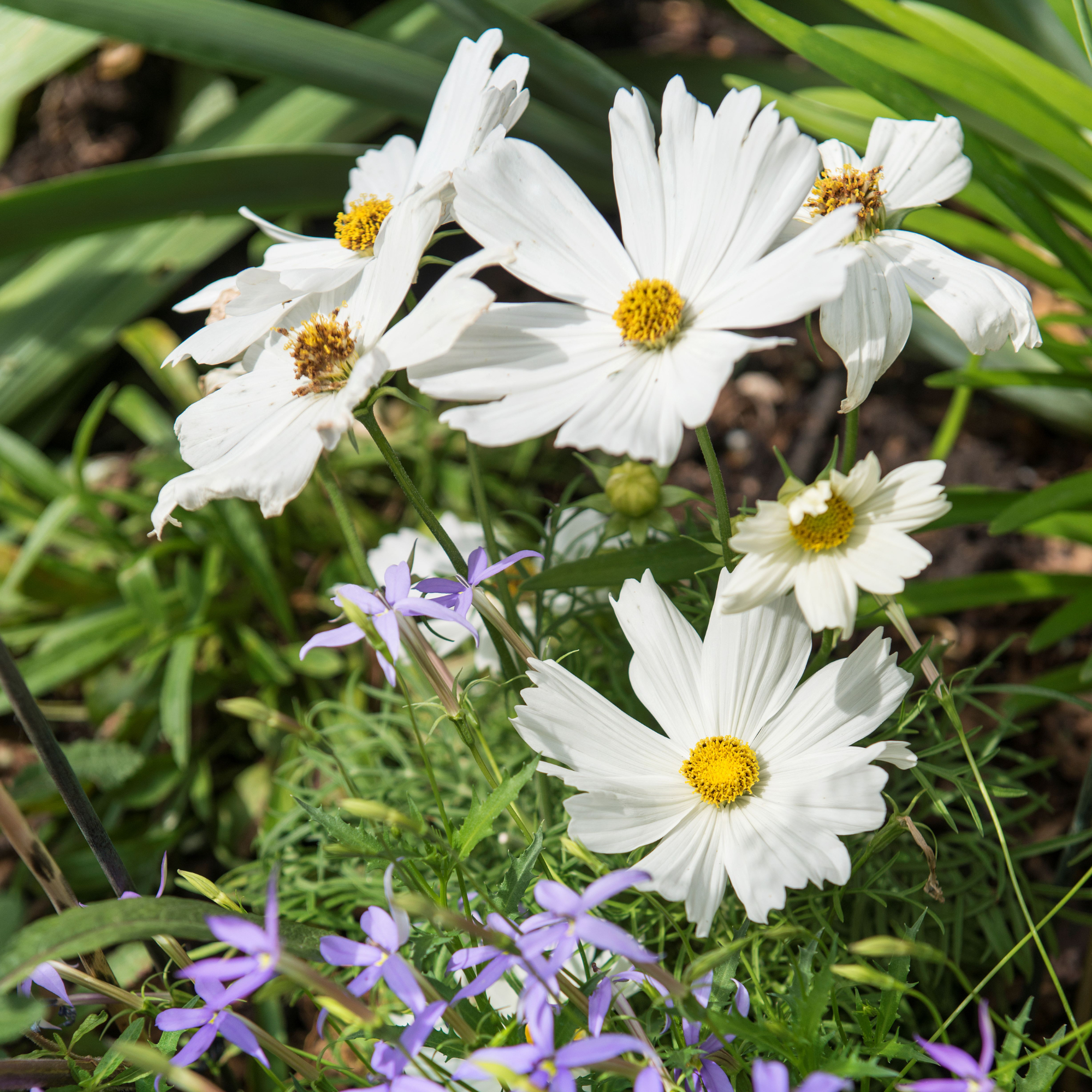
5. Watering
Similar to growing other plants in your garden, being wary to steer clear of garden watering mistakes is essential to your cosmos thriving.
'You need to keep the soil consistently moist but not waterlogged, especially during any particularly hot, dry spells,' explains Josh Novell, garden expert and director of Polhill. 'It's also essential that you water your plant at the base to avoid wetting the foliage, as this can lead to fungal issues.'
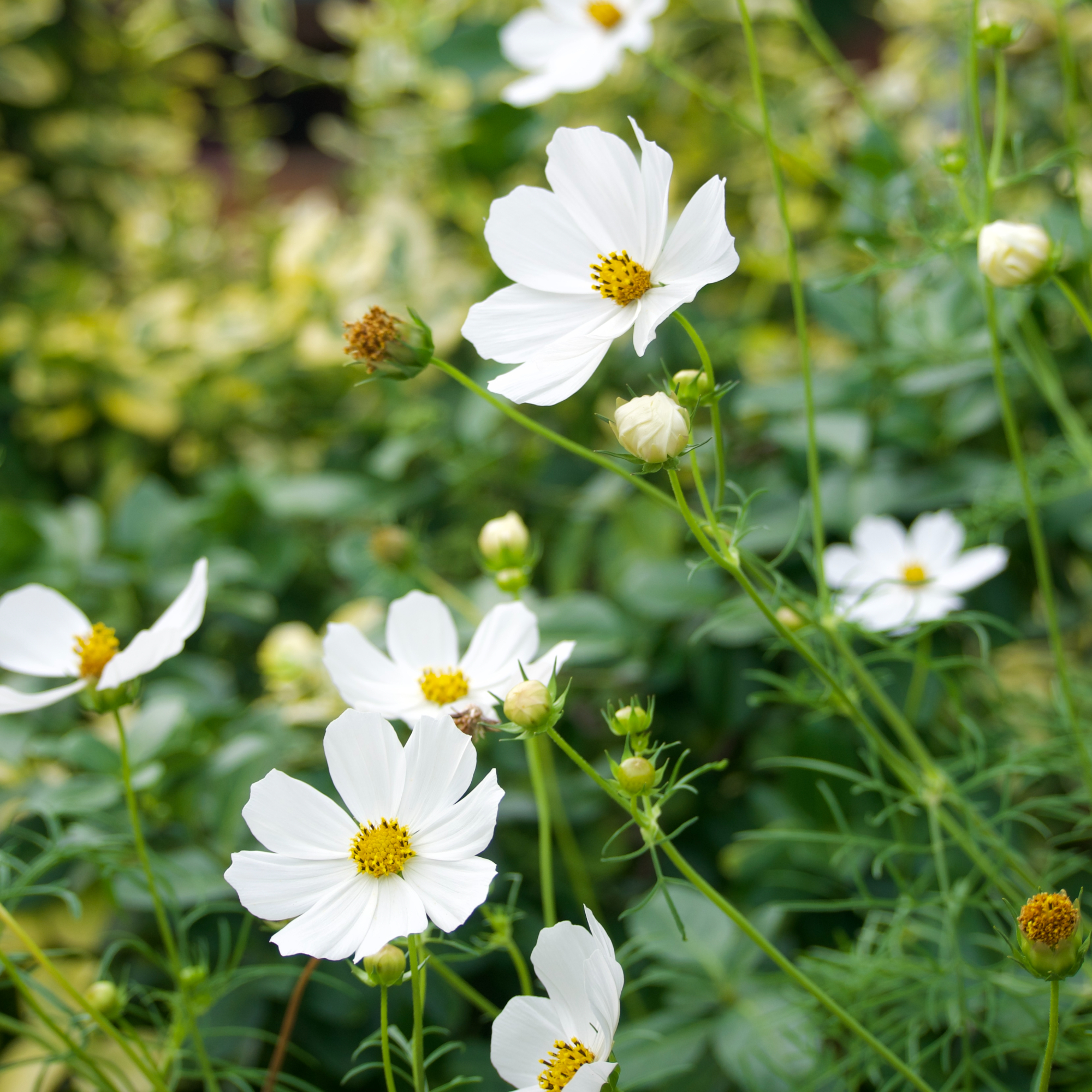
6. Care and maintenance
Of course, one of the most important parts of knowing how to grow cosmos is knowing how to care for them. If you're experienced with growing flowers in your garden borders and front garden, you'll know that deadheading them is key.
'Regular deadheading really encourages continuous flowering throughout the growing season, and it also prevents the plant from setting seed, which can reduce flowering,' says Josh. You can do this with some sharp shears.
Not only that, but you can also fertilise your cosmos. Although cosmos are relatively light feeders, Josh explains that a balanced liquid fertiliser can be applied every 4-6 weeks to promote healthy growth and abundant blooms.
Lastly, depending on the variety of cosmos you plant, Chris adds that you may need to offer them some support or staking. 'You may want to consider this if you live in a more windy area.'

FAQs
How much sun do cosmos need to grow?
'As summer flowering plants, cosmos are massive fans of sunlight. So, make sure your cosmos are planted in an area of your garden that receives full and direct sunlight throughout the day,' advises Andrew White at Rhino Greenhouses Direct.
Ideally, you should select a spot in your garden that receives between 6-8 hours of direct sunlight per day.
How long do cosmos take to grow?
'Cosmo seeds take around 21 days to germinate, so within 3 weeks you should begin to see seedlings forming,' says Andrew.
'After your seedlings have formed, carefully dig them up and space them out further, ensuring that there is about 10-12 inches between your plants. Keep your seedlings well-watered and watch them grow!'
Can cosmos grow in pots?
Yes, you can grow cosmos in pots. Following the advice of growing cosmos in the garden, be sure to plant your seeds about 60cm deep and once seedlings have formed, consider moving them to in your garden and planting them at a similar depth.
Now you know how to grow cosmos, you can enjoy these beautiful blooms come summertime.







